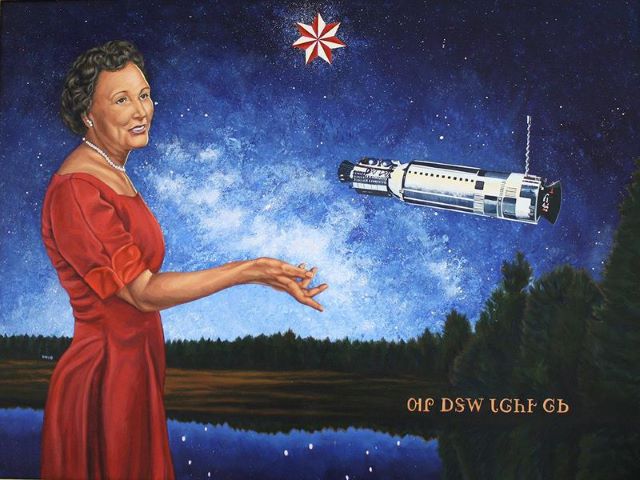
Early this year, the National Air and Space Museum celebrated the life and achievements of Mary Golda Ross (1908-2008), an aerospace engineer and educator. According to the profile, her life was one full of Cherokee culture and history.
Mary was the first known Native American female engineer. She worked at Lockheed from 1942 until her retirement in 1973, where she was best remembered for her work on a rocket program and “design concepts for interplanetary space travel, crewed and uncrewed Earth-orbiting flights, the earliest studies of orbiting satellites for both defense and civilian purposes.”
In 2018, she was chosen to be depicted on the 2019 Native American $1 Coin by the U.S. Mint celebrating American Indians in the space program.
“As a mathematician and engineer, she wrote a number of professional and theoretical works and was one of the authors of the NASA Planetary Flight Handbook Vol. III, about space travel to Mars and Venus,” NASA History recalls.
At age 96, wearing her “first traditional Cherokee dress” of green calico, made by her niece, she participated in the opening ceremonies of the National Museum of the American Indian in Washington, D.C. in the fall of 2004. The ceremony included more than 25,000 Native people from the Western Hemisphere in attendance. Upon her death, she left a $400,000 endowment to that museum. She died on April 29, 2008, at the age of 99.
According to the National Park Service, Mary was born in Park Hill, Oklahoma. As a child, she was sent to live with her grandparents in Tahlequah, the capital of the Cherokee Nation, so she could attend school. At 16, she enrolled in Northeastern State Teachers’ College in Tahlequah, earning her Bachelor’s degree in mathematics in 1928. Northeastern State Teachers’ College was founded on the grounds of the Cherokee Female Seminary, which Mary’s great-great-grandfather, Cherokee Chief John Ross, was instrumental in establishing.
After teaching math and science in Oklahoma, in 1936 she worked as a statistical clerk for the Bureau of Indian Affairs, located in the Department of the Interior building in Washington, DC. The Bureau reassigned her in 1937 to be an advisor to girls at the Santa Fe Indian School in New Mexico. In 1938, after years of taking summer classes, she completed her Master’s degree, also in mathematics, from the Colorado State Teachers College. Mary was fascinated by the stars and took every astronomy class she could.
In 1942, Lockheed in California hired her as a mathematician. She was among the many women who got jobs that were traditionally held by men while men were serving in the military during World War II. She worked on designing fighter jets and large planes. Unlike many other women, who were forced out of their jobs as men returned from the War, Mary continued working for Lockheed. The company sent her to the University of California Los Angeles to get her professional certification in engineering — the first Native American woman to do so.
In 1952, she was one of the 40 founding members of Lockheed’s secret Advanced Development Program, known as the Skunk Works. Much of the work she did there remains classified. Some of the work we do know about includes preliminary design concepts for interplanetary space travel, manned space flight, ballistic missiles, and satillites in orbit above the earth. She also wrote about the feasibility and logistics of space travel to Mars and Venus.
Ross’s legacy lives on in the technologies she designed, the people she inspired, and the museums, libraries, and archives that maintain records of her life and career. Artists, too, honor and share Ross’s story.
Oklahoma-based artist America Meredith, a citizen of the Cherokee nation, commemorated Ross in a painting entitled, Ad Astra per Astra, now in the collection of the National Museum of the American Indian. The title is a play on the popular Latin phrase, Per Aspera ad Astra (“through hardships to the stars”).
Meredith’s title translates as “to the stars through the stars” which draws from Cherokee cosmology about how spirits long ago lifted young boys into the sky, thereby forming the Pleiades. Meredith depicts Ross standing before a starry night sky with the RM-81 Agena to her right and a seven-pointed star (the seven clans of the Cherokee) overhead, symbolizing her dedication to her culture and career.
The U.S. Army Corps of Engineers has been tasked with…
Brown and Caldwell, a leading environmental engineering and construction firm,…
Humboldt State University, one of four campuses within the California…